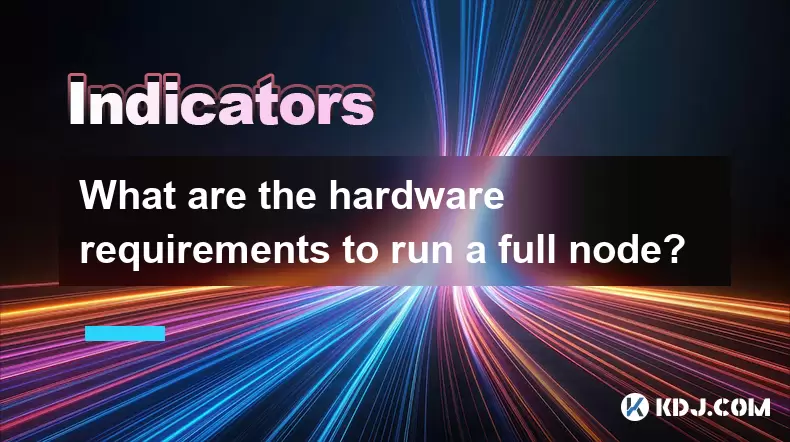-
 Bitcoin
Bitcoin $114800
-0.87% -
 Ethereum
Ethereum $4776
1.26% -
 XRP
XRP $3.035
-0.59% -
 Tether USDt
Tether USDt $0.9997
0.01% -
 BNB
BNB $868.3
-2.21% -
 Solana
Solana $207.8
2.24% -
 USDC
USDC $0.9999
0.00% -
 Dogecoin
Dogecoin $0.2321
-2.70% -
 TRON
TRON $0.3658
1.42% -
 Cardano
Cardano $0.9042
-1.85% -
 Chainlink
Chainlink $25.67
-0.24% -
 Hyperliquid
Hyperliquid $43.96
1.17% -
 Sui
Sui $3.679
-2.11% -
 Stellar
Stellar $0.4091
-1.83% -
 Ethena USDe
Ethena USDe $1.000
-0.01% -
 Bitcoin Cash
Bitcoin Cash $593.4
0.58% -
 Avalanche
Avalanche $25.53
0.89% -
 Hedera
Hedera $0.2476
-1.21% -
 Litecoin
Litecoin $119.7
-1.84% -
 UNUS SED LEO
UNUS SED LEO $9.609
0.34% -
 Toncoin
Toncoin $3.352
-0.91% -
 Shiba Inu
Shiba Inu $0.00001292
-2.45% -
 Uniswap
Uniswap $11.08
-1.13% -
 Polkadot
Polkadot $4.100
-1.09% -
 Cronos
Cronos $0.1609
4.53% -
 Dai
Dai $0.9999
0.00% -
 Bitget Token
Bitget Token $4.706
-0.88% -
 Aave
Aave $350.1
2.03% -
 Monero
Monero $268.0
0.06% -
 Ethena
Ethena $0.7069
-4.77%
What are the hardware requirements to run a full node?
Running a full node boosts blockchain security and privacy, requiring robust hardware like SSD storage, ample RAM, and a stable internet connection.
Aug 13, 2025 at 11:35 am

Understanding Full Nodes in the Cryptocurrency Ecosystem
A full node is a computer that fully validates transactions and blocks on a blockchain network. Unlike lightweight or SPV (Simplified Payment Verification) nodes, full nodes download and verify the entire blockchain history, enforcing all consensus rules. Running a full node enhances network security, privacy, and decentralization. The most common blockchain requiring such nodes is Bitcoin, though Ethereum, Litecoin, and other major cryptocurrencies also support full node operation. Each network has specific hardware demands based on its blockchain size, transaction throughput, and protocol design.
Minimum and Recommended Specifications for Bitcoin Full Nodes
To run a Bitcoin full node, certain hardware thresholds must be met. The minimum requirements include a dual-core processor with a clock speed of at least 1.5 GHz, 2 GB of RAM, and 350 GB of available storage space. However, these specs are bare essentials and may result in slow synchronization or instability. The recommended configuration involves a quad-core processor running at 2.0 GHz or higher, 4 GB or more of RAM, and at least 1 TB of SSD storage. An SSD is strongly advised due to faster read/write speeds, which significantly reduce block validation time. Additionally, the operating system should be up-to-date, with support for 64-bit architecture.
Network connectivity is equally critical. A stable broadband internet connection with at least 500 KB/s download speed is necessary. The node must remain online consistently, as frequent disconnections reduce its usefulness to the network. Unmetered bandwidth or a high data cap is recommended, as the node will upload blocks and transaction data to other peers. A public IP address or proper port forwarding (default port 8333 for Bitcoin) improves connectivity and peer count.
Ethereum Full Node Hardware Considerations
Running an Ethereum full node presents different challenges due to the network's larger state size and faster block times. The minimum RAM requirement is 8 GB, though 16 GB is strongly recommended to handle state trie operations efficiently. The CPU should support modern instruction sets and have multiple cores—preferably four or more—for handling concurrent tasks like transaction validation and peer communication.
Storage is a major factor. Ethereum's blockchain, especially with its state data, exceeds 1.5 TB when running a full archive node. For a standard full node, 500 GB to 1 TB of SSD storage is necessary. HDDs are not suitable due to the high number of random disk accesses. The Geth or Nethermind client software must be installed on a system with adequate I/O performance. Like Bitcoin, a reliable internet connection with at least 10 Mbps upload speed is essential to serve peers and maintain network health.
Storage Optimization and Disk Management
The choice between SSD and HDD is not optional when running a full node. HDDs suffer from high latency during random access, which is frequent during blockchain validation. SSDs drastically reduce sync time and improve node responsiveness. For Bitcoin, an NVMe SSD can cut initial synchronization from weeks to days. For Ethereum, where state pruning is involved, SSD endurance and write cycles must be considered.
Using external or network-attached storage (NAS) is discouraged. Full nodes require low-latency, direct-attached storage. If using Linux, enabling TRIM support for SSDs helps maintain performance over time. Partitioning the drive to separate the blockchain data from the operating system improves manageability. Monitoring disk health via SMART tools ensures early detection of potential hardware failure. Regular backups of the wallet and configuration files are essential, though the blockchain itself can be re-downloaded.
Operating System and Software Dependencies
Full nodes can run on Windows, macOS, or Linux, but Linux distributions like Ubuntu 20.04 or later are preferred for their stability and performance. The operating system must support the latest version of the blockchain client—Bitcoin Core, LND, Geth, or Besu. Ensure the system is updated with security patches and has sufficient swap space if RAM is limited.
Dependencies such as OpenSSL, LevelDB, and Boost libraries must be installed before compiling or running the node software. On Linux, use package managers like apt or yum to install prerequisites. For example, installing Bitcoin Core on Ubuntu requires:
sudo apt install build-essential libtool autotools-dev automake pkg-configsudo apt install libssl-dev libevent-dev bsdmainutils python3sudo apt install libboost-system-dev libboost-filesystem-dev libboost-chrono-dev
Configuration files like bitcoin.conf or geth/config.toml allow customization of data directory, RPC access, peer limits, and pruning options. Enabling pruning reduces disk usage by deleting old blocks, though it limits the node’s ability to serve historical data.
Network Configuration and Security Setup
To ensure the node is reachable, configure the router for port forwarding. For Bitcoin, forward port 8333 (TCP) to the node’s local IP. On Ethereum, port 30303 (TCP/UDP) must be open. Use a static IP address or DHCP reservation to prevent IP changes. Enable UPnP in the client software if manual port forwarding is not feasible.
Firewall settings must permit inbound and outbound connections on the required ports. On Linux, use ufw:
sudo ufw allow 8333/tcp(Bitcoin)sudo ufw allow 30303/tcpsudo ufw allow 30303/udp(Ethereum)
Disable unnecessary services to reduce attack surface. Use strong passwords for RPC access and restrict RPC to localhost unless remote access is needed. Consider running the node under a dedicated user account without root privileges to limit potential damage from exploits.
Frequently Asked Questions
Can I run a full node on a Raspberry Pi?
Yes, but with limitations. A Raspberry Pi 4 with 8 GB RAM and a high-speed SSD via USB 3.0 can run a pruned Bitcoin node. Ethereum is less feasible due to memory and storage demands. Performance will be lower than a desktop-grade machine, and sync times will be longer.
Does running a full node earn me cryptocurrency?
No. Full nodes do not receive block rewards or transaction fees. Their role is validation and propagation, not mining or staking. Earning requires participation in mining, staking, or liquidity provision, which are separate processes.
How much electricity does a full node consume?
A typical node on a desktop consumes 50–100 watts, depending on hardware. On a low-power device like a Raspberry Pi, consumption drops to 5–10 watts. Over a month, this amounts to 3–8 kWh, making it energy-efficient compared to mining rigs.
What happens if my node goes offline?
The node will miss new blocks and transactions. Upon restart, it will resync from the last known block. Frequent downtime reduces its reputation in the peer network, leading to fewer connections. Continuous uptime is ideal for maximum utility.
Disclaimer:info@kdj.com
The information provided is not trading advice. kdj.com does not assume any responsibility for any investments made based on the information provided in this article. Cryptocurrencies are highly volatile and it is highly recommended that you invest with caution after thorough research!
If you believe that the content used on this website infringes your copyright, please contact us immediately (info@kdj.com) and we will delete it promptly.
- Viral Memes, RWA Platforms, and DePIN Crushers: What's Hot in Crypto?
- 2025-08-24 14:45:20
- Meta's Hypernova Glasses: AR's Next Big Thing?
- 2025-08-24 15:05:15
- Down Under Showdown: Australia vs. South Africa in ODI Cricket
- 2025-08-24 15:10:14
- XYZVerse, Shiba Inu, and the 2025 Bull Cycle: A Meme Coin Evolution
- 2025-08-24 13:05:12
- WLFI Token, BingX, and the Trading Landscape: A New York Perspective
- 2025-08-24 12:45:20
- Aave, Governance, Allocation: Navigating DeFi's Shifting Sands
- 2025-08-24 12:45:20
Related knowledge

What does it mean when the +DI and -DI cross frequently in the DMI indicator but the ADX is flattening?
Aug 11,2025 at 03:15am
Understanding the DMI Indicator ComponentsThe Directional Movement Index (DMI) is a technical analysis tool composed of three lines: the +DI (Positive...

What does the sudden appearance of a "dark cloud cover" candlestick pattern during an uptrend indicate?
Aug 13,2025 at 11:35am
Understanding the 'Dark Cloud Cover' Candlestick PatternThe dark cloud cover is a bearish reversal pattern in technical analysis that typically appear...

What does it mean when the moving average, MACD, and RSI all send buy signals simultaneously?
Aug 11,2025 at 01:42pm
Understanding the Convergence of Technical IndicatorsWhen the moving average, MACD, and RSI all generate buy signals at the same time, traders interpr...

What does it mean when both the KDJ indicator and the RSI show overbought signals simultaneously?
Aug 13,2025 at 11:35am
Understanding the KDJ Indicator in Cryptocurrency TradingThe KDJ indicator is a momentum oscillator derived from the Stochastic Oscillator, widely use...

What does it mean when the price is trading above the SAR indicator but the red dots are densely packed?
Aug 09,2025 at 11:49pm
Understanding the SAR Indicator and Its Visual SignalsThe SAR (Parabolic Stop and Reverse) indicator is a technical analysis tool used primarily to de...

What does it mean when the candlestick chart forms a "Morning Star" but trading volume is sluggish?
Aug 12,2025 at 06:28pm
Understanding the Morning Star Candlestick PatternThe Morning Star is a three-candle bullish reversal pattern commonly observed in cryptocurrency pric...

What does it mean when the +DI and -DI cross frequently in the DMI indicator but the ADX is flattening?
Aug 11,2025 at 03:15am
Understanding the DMI Indicator ComponentsThe Directional Movement Index (DMI) is a technical analysis tool composed of three lines: the +DI (Positive...

What does the sudden appearance of a "dark cloud cover" candlestick pattern during an uptrend indicate?
Aug 13,2025 at 11:35am
Understanding the 'Dark Cloud Cover' Candlestick PatternThe dark cloud cover is a bearish reversal pattern in technical analysis that typically appear...

What does it mean when the moving average, MACD, and RSI all send buy signals simultaneously?
Aug 11,2025 at 01:42pm
Understanding the Convergence of Technical IndicatorsWhen the moving average, MACD, and RSI all generate buy signals at the same time, traders interpr...

What does it mean when both the KDJ indicator and the RSI show overbought signals simultaneously?
Aug 13,2025 at 11:35am
Understanding the KDJ Indicator in Cryptocurrency TradingThe KDJ indicator is a momentum oscillator derived from the Stochastic Oscillator, widely use...

What does it mean when the price is trading above the SAR indicator but the red dots are densely packed?
Aug 09,2025 at 11:49pm
Understanding the SAR Indicator and Its Visual SignalsThe SAR (Parabolic Stop and Reverse) indicator is a technical analysis tool used primarily to de...

What does it mean when the candlestick chart forms a "Morning Star" but trading volume is sluggish?
Aug 12,2025 at 06:28pm
Understanding the Morning Star Candlestick PatternThe Morning Star is a three-candle bullish reversal pattern commonly observed in cryptocurrency pric...
See all articles

























































































